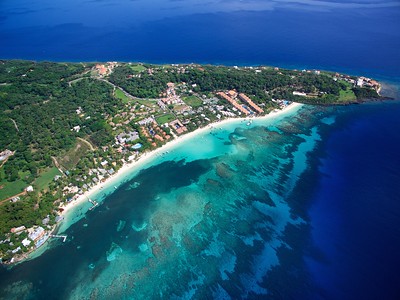ROATAN
ROATAN
Roatan, the largest of the Bay Islands, 30 miles north of Honduras. Nearly 40 miles long and only 2.5 miles at its widest point, the remote island boasts white-sand beaches, pristine bays, and spectacular coral reefs. Roatan is a true melting pot. Its 50,000 people are a mix of Spanish, English, Paya Indian, and African, the result of a turbulent history that includes conquistadors, pirates, and slave traders. In the mid-17th century, the Spanish relocated Paya Indians in an unsuccessful attempt to rid the island of British pirates. In the late 18th century, the island was repopulated when British troops deported thousands of black Caribbeans who had sided with the French during a battle on St. Vincent.
Another group of immigrants arrived from the Caymans in the 1830s. Today, tourism has overtaken commercial fishing as Roatan's main industry. Part of the world's second-largest coral reef system, Roatan's waters are rich in colorful corals and sponges. Divers and snorkelers swim alongside schools of fish, whale sharks, barracudas, manta rays, dolphins, and turtles. The water is like what you'd find in a bathtub, hovering around 80 degrees Fahrenheit, and snorkeling is like watching high-definition television, with fantastic visibility. Dozens of world-class dive and snorkel sites are accessible from the island's white-sand beaches and numerous operators located in West End Village, the hub of island activity. Marlin, tuna, and wahoo attract anglers year-round, particularly for the annual fall fishing tournament.
Roatan is also a mecca for water sports. Kayaking, water skiing, sailing, and wakeboarding are popular activities. The former pirate haven offers travelers unspoiled charm and exceptional marine life. Like many of its Caribbean neighbors, the island is in transition. Expensive new homes and resorts stand in stark contrast to homes clad in tin roofs. In addition to cruise ships, direct flights from Miami and Houston and weekly charters from Milan are bringing in large numbers of tourists
